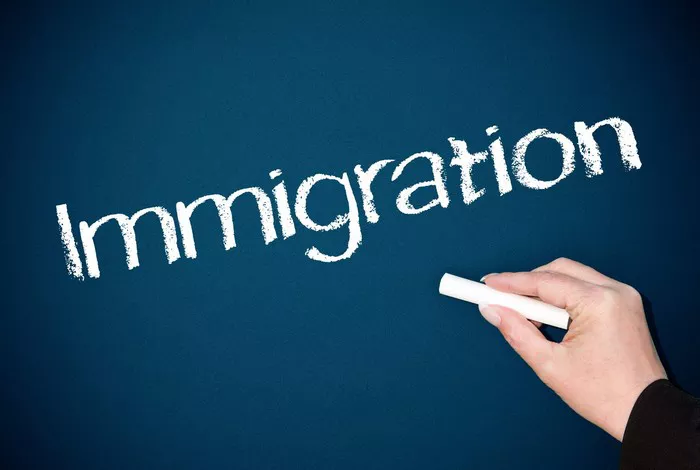In an era defined by globalization, the movement of people across borders has become a defining feature of the 21st century. As nations grapple with demographic shifts, economic dynamics, and political upheavals, understanding immigration trends is crucial for policymakers, economists, and citizens alike. Among the myriad nations welcoming newcomers, one country stands out with the highest immigration rate, drawing attention for its unique blend of economic opportunities, cultural diversity, and social stability.
The Landscape of Global Immigration
Before delving into the specifics of the country with the highest immigration rate, it is imperative to understand the broader context of global migration. According to the United Nations’ International Migration Report, the total number of international migrants reached an unprecedented 281 million in 2020. This figure represents a significant increase from previous decades, highlighting the interconnectedness of our world and the growing movement of people across borders.
Unraveling the Factors Behind Immigration Trends
Several factors contribute to a nation’s attractiveness to immigrants. Economic opportunities, political stability, quality of life, and cultural openness are among the key determinants. When considering these factors on a global scale, it becomes evident that certain countries excel in creating environments conducive to immigration.
Economic Powerhouse: The Driving Force Behind Immigration
One of the primary magnets for immigrants is the promise of economic prosperity. Countries boasting robust economies, job markets, and opportunities for upward mobility naturally become attractive destinations. Among the contenders, the leading country with the highest immigration rate is currently Luxembourg.
Nestled in the heart of Western Europe, Luxembourg has emerged as an economic powerhouse, defying its small size with a GDP per capita that ranks among the highest globally. The country’s strategic location, favorable business environment, and emphasis on innovation have created a magnet for skilled workers, entrepreneurs, and professionals seeking to advance their careers.
A Closer Look at Luxembourg’s Immigration Landscape
1. Economic Opportunities and Prosperity
Luxembourg’s economic success story is characterized by its thriving financial sector, multinational corporations, and a commitment to innovation. The Grand Duchy has positioned itself as a hub for finance and technology, attracting a diverse pool of talent from around the world. With a strong emphasis on research and development, Luxembourg has become a magnet for professionals in fields such as finance, information technology, and biotechnology.
2. Political Stability and Security
Beyond economic factors, Luxembourg boasts a long-standing tradition of political stability and security. The country’s commitment to maintaining a peaceful and inclusive society has made it an appealing destination for individuals seeking refuge from political turmoil and conflict. The rule of law, transparent governance, and respect for human rights contribute to a welcoming atmosphere for immigrants and their families.
3. Quality of Life and Social Services
Luxembourg consistently ranks high in global quality of life indices, offering residents a unique blend of cultural richness, healthcare accessibility, and educational excellence. The country’s commitment to social services ensures that immigrants enjoy a high standard of living, with comprehensive healthcare, education, and social welfare programs in place. This commitment to inclusivity creates an environment where immigrants feel not only economically secure but also socially integrated.
4. Cultural Diversity and Multilingualism
Luxembourg’s rich cultural tapestry, shaped by centuries of history and influences from neighboring countries, provides a welcoming environment for individuals from diverse backgrounds. The country’s commitment to multilingualism—Luxembourgish, French, and German are official languages—further enhances its appeal to a global audience. Immigrants find themselves in a society that celebrates cultural diversity, fostering a sense of belonging and acceptance.
Challenges and Considerations
While Luxembourg’s status as the country with the highest immigration rate reflects its success in creating an attractive environment, it is not without challenges. As the population grows more diverse, policymakers must address issues related to social integration, housing affordability, and infrastructure development. Striking a balance between economic growth and social cohesion will be essential for sustaining Luxembourg’s success as a global immigration destination.
Lessons for Other Nations
Luxembourg’s experience offers valuable lessons for other countries seeking to harness the benefits of immigration. Emphasizing economic growth, political stability, and a commitment to social inclusivity can position a nation as a magnet for talent and skills. However, it is crucial for policymakers to strike a delicate balance, ensuring that the benefits of immigration are shared equitably among the existing population and newcomers alike.
Conclusion
As the world continues to witness unprecedented levels of migration, understanding the factors that drive people to certain countries is of paramount importance. Luxembourg’s ascent to the top of the immigration rate charts serves as a testament to the interconnectedness of economic prosperity, political stability, and social inclusivity. While challenges lie ahead, the Grand Duchy stands as a beacon, demonstrating that a small nation can wield significant global influence by embracing diversity and fostering an environment where individuals from all walks of life can thrive. As other nations navigate the complexities of the global migration landscape, Luxembourg’s example offers a compelling blueprint for success in the 21st century.


